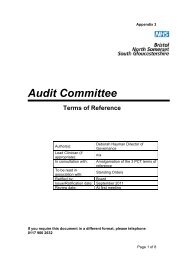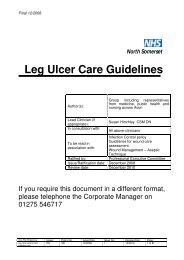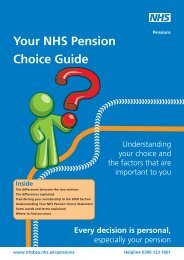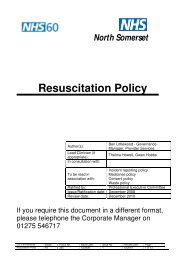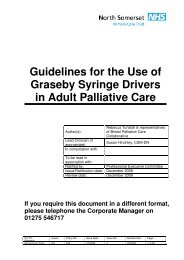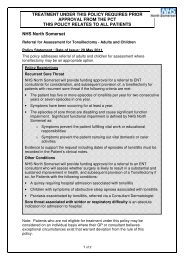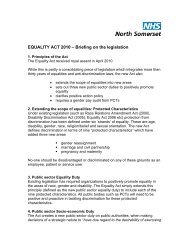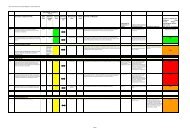DRAFT North Somerset Sustainable Community Strategy 08 - 26.pdf
DRAFT North Somerset Sustainable Community Strategy 08 - 26.pdf
DRAFT North Somerset Sustainable Community Strategy 08 - 26.pdf
You also want an ePaper? Increase the reach of your titles
YUMPU automatically turns print PDFs into web optimized ePapers that Google loves.
Appendix * <strong>North</strong> <strong>Somerset</strong> Quality of Life IndicatorsQuality of Life indicators provide a picture of life for an area covering a range of issues.These indicators can be provided in a format that is easily accessible and will trackchange over time to aid action.Headline Indicators• Accessibility to education facilities/health facilities & healthy food/employment• Age standardised mortality rates for a) all cancers; b) circulatory diseases; and c)respiratory diseases• British Crime Survey comparator crimes for PSA1• Carbon Dioxide emissions by sector and per capita emissions• House price to income ratio.• Number of people who live in the most deprived 20% of areas Nationally• Percentage of residents who think that for their local area, over the past three yearsthe following have got better or stayed the same a) activities for teenagers; b)cultural facilities (for example, cinemas, museums); c) facilities for young children; d)sport and leisure facilities; and e) parks and open spaces• Percentage of the working-age population that is in employment• Percentage of 15-year-old pupils in schools maintained by the local authorityachieving five or more GCSEs at grades A*-C or equivalent• The number of people recorded as or reporting that they have engaged in formalvolunteering on average at least 2 hours a week over the past year.• Number of properties at risk of flooding.• Number of protected sites (SPAs, SACs, SSSIs) in favourable condition.Supporting Indicators• Affordable dwellings completed as a percentage of all new housing completions• All registered provision for children and young people listed by Children’sInformation Service• Bird population indices (a) farmland birds (b) woodland birds (c) coastal birds (d)wintering wetland birds• Difference between wards with worst health and deprivation indicators and thepopulation as a whole• Job density (number of jobs filled to working age population)• Mode share of journeys to school• Number of deaths or serious injuries on roads• Number households in temporary accommodation.• Percentage change in the number of VAT registered businesses• (To be shown alongside the total number of VAT registered businesses in the area atthe end of the year)• Percentage of residents surveyed who said they feel ‘fairly safe’ or ‘very safe’outside a) during the day; b) after dark• Percentage of residents who think that for their local area, over the past threeyears, that a) public transport has got better or stayed the same; b) the level oftraffic congestion has got better or stayed the same.• Proportion of people who voted in local and town/parish elections• Proportion of working-age population qualified to a) NVQ2 or equivalent and; b)NVQ4 or equivalent.• Teenage pregnancy, conceptions under 18 years, per 1,000 females aged 15-17• Volume of household waste collected and the proportion recycled54



